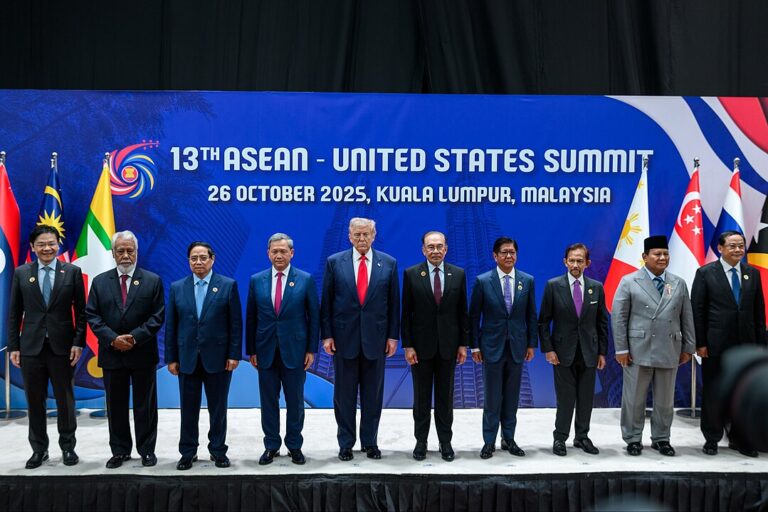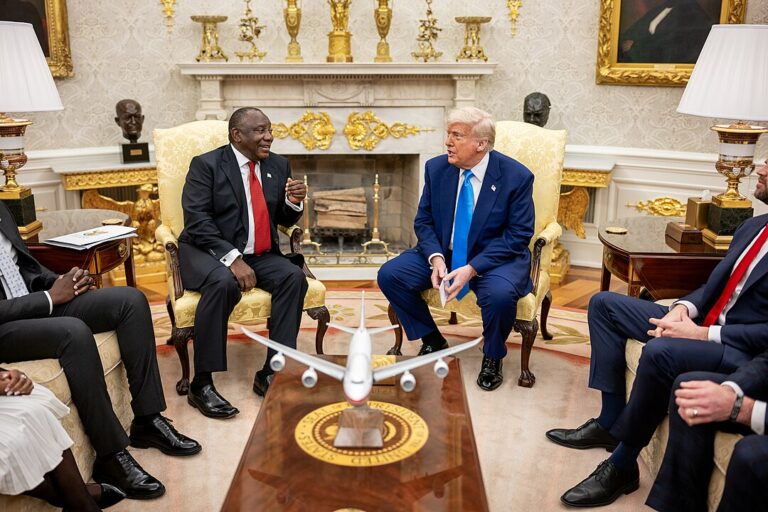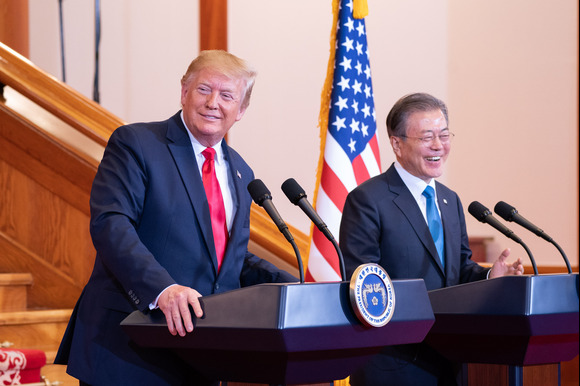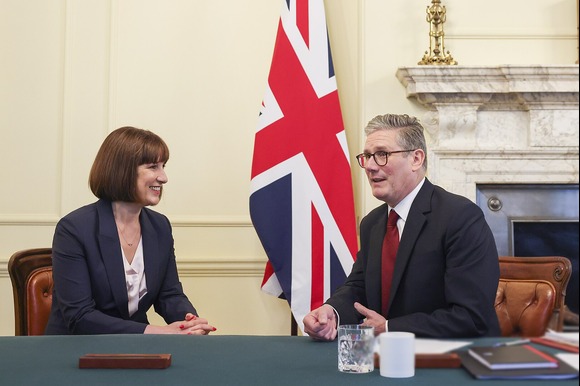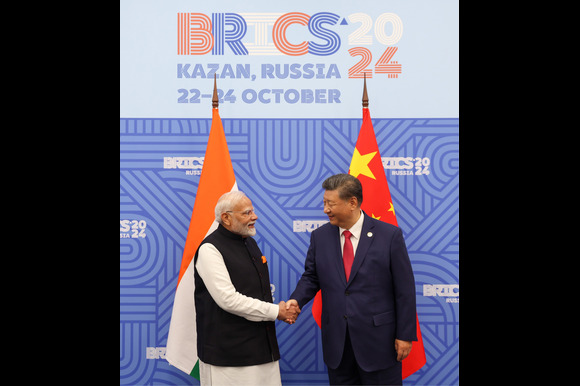
By Prime Minister's Office (GODL-India), GODL-India,
After years of heightened tensions along their disputed border, India and China appear to be cautiously exploring a reset in relations. However, significant strategic distrust and unresolved issues continue to overshadow progress.
The recent visit of two senior Indian officials to China has been viewed as a possible sign of a thaw. In June, National Security Adviser Ajit Doval and Defence Minister Rajnath Singh travelled to China for the Shanghai Cooperation Organisation (SCO) meetings—marking the first high-level Indian visit to China in five years. The SCO, a Eurasian security bloc, includes China, Russia, Iran, Pakistan, and India among its 10 members.
At the heart of the India-China standoff lies a 3,440km (2,100-mile) poorly demarcated border, prone to shifts due to rivers, lakes, and snowcaps. These shifts have frequently brought Indian and Chinese troops into direct contact, leading to skirmishes. The deadliest of these occurred in June 2020 in the Galwan Valley of Ladakh, where at least 20 Indian and four Chinese soldiers were killed—the first such fatalities since 1975. Since then, multiple standoffs have been reported across various sectors.
Recent geopolitical shifts and on-the-ground realities, however, appear to be nudging both countries toward a more conciliatory approach. In late 2023, both sides reached an agreement on key friction points in Ladakh. In January, they restored direct flights and eased visa restrictions imposed after the 2020 clash. That same month, Indian pilgrims were permitted to visit the sacred Mount Kailash and a holy lake in Tibet, for the first time in six years.
Despite these overtures, experts caution that serious obstacles remain. Bilateral trade between India and China surpassed $127 billion last year, making China India’s second-largest trading partner. India’s economy relies heavily on Chinese imports, particularly rare earth elements crucial to sectors like manufacturing and clean energy. Maintaining peace along the border is therefore vital to sustaining economic momentum.
For its part, China, amid heightened tensions over Taiwan, seeks stability along its Himalayan frontier. Yet, at a strategic level, Beijing harbors suspicions that India is being positioned by Western powers as a counterbalance to China’s rise. Consequently, China is likely to demand progress beyond the border issue—seeking expanded exports to India, increased investment opportunities, and the lifting of visa curbs for Chinese engineers and workers. India had previously banned several Chinese apps and tightened investment regulations citing national security concerns after the Galwan clash.
Shifting geopolitics, particularly in the US under President Donald Trump’s second term, have also influenced India’s recalibration. According to Professor Christopher Clary of the University at Albany, Delhi initially expected stronger strategic alignment with Washington. However, that support has not materialized as hoped. During a brief but intense conflict with Pakistan in May, India took note of growing military cooperation between Islamabad and Beijing. Pakistan employed Chinese-made fighter jets, air defense systems, and air-to-air missiles during the four-day confrontation.
Compounding India’s unease, President Trump claimed to have brokered a ceasefire between India and Pakistan—an assertion firmly denied by Delhi, which maintains that the ceasefire resulted from direct talks with Islamabad. Further aggravating India, Trump later hosted Pakistan’s army chief, General Asim Munir, at the White House—raising eyebrows in Delhi.
Simultaneously, Washington and Delhi remain locked in intense negotiations over a new trade agreement, with Trump threatening reciprocal tariffs on multiple nations, including India, if no deal is reached by 1 August. Given these uncertainties, Clary suggests that Indian policymakers now view closer engagement with China as a strategic necessity.
Strategists argue that while the US views India as a counterweight to China, Trump’s unpredictability has cast doubts over America’s reliability in a future India-China conflict. The Quadrilateral Security Dialogue (Quad)—involving the US, India, Japan, and Australia—has also receded into the background during Trump’s current term.
Meanwhile, China has expanded its influence in other multilateral bodies such as the SCO and BRICS, further motivating India to adopt a pragmatic diplomatic approach. Former Indian diplomat Phunchok Stobdan notes that while Delhi is open to engagement, it is also cautious of appearing too conciliatory to Beijing due to domestic political sensitivities.
India is also closely observing Russia’s growing dependence on China following Western sanctions over the Ukraine war. Moscow now relies heavily on Beijing for trade and investment, raising concerns in Delhi about how Russia might respond in any future India-China confrontation.
Beijing, leveraging its industrial dominance, has also used trade as a strategic lever. It recently restricted exports of vital goods such as rare earth magnets and fertilizers—moves that could severely impact Indian manufacturing and agriculture. India’s automobile sector, for example, has warned of looming disruptions unless these restrictions are eased. In response, the Indian government has initiated talks with Chinese authorities to address these concerns.
Despite China’s business ambitions, it has not softened its stance on territorial disputes, particularly over Arunachal Pradesh—a north-eastern Indian state that Beijing claims as part of “Southern Tibet.” India firmly asserts that Arunachal is an integral part of the country, citing its fully functioning democratic institutions and regular elections.
Professor Shen Dingli of Fudan University in Shanghai suggests that unless both sides abandon maximalist notions of sovereignty, prolonged tensions are inevitable. However, he also posits that a mutual compromise on Arunachal Pradesh could pave the way for lasting peace—though neither side appears ready to make such a concession.
Realistically, both nations understand that their border dispute is unlikely to be resolved in the near term. Instead, they seem focused on maintaining a functional, mutually beneficial relationship and avoiding further escalation—while increasingly distancing themselves from reliance on any singular global alliance.

